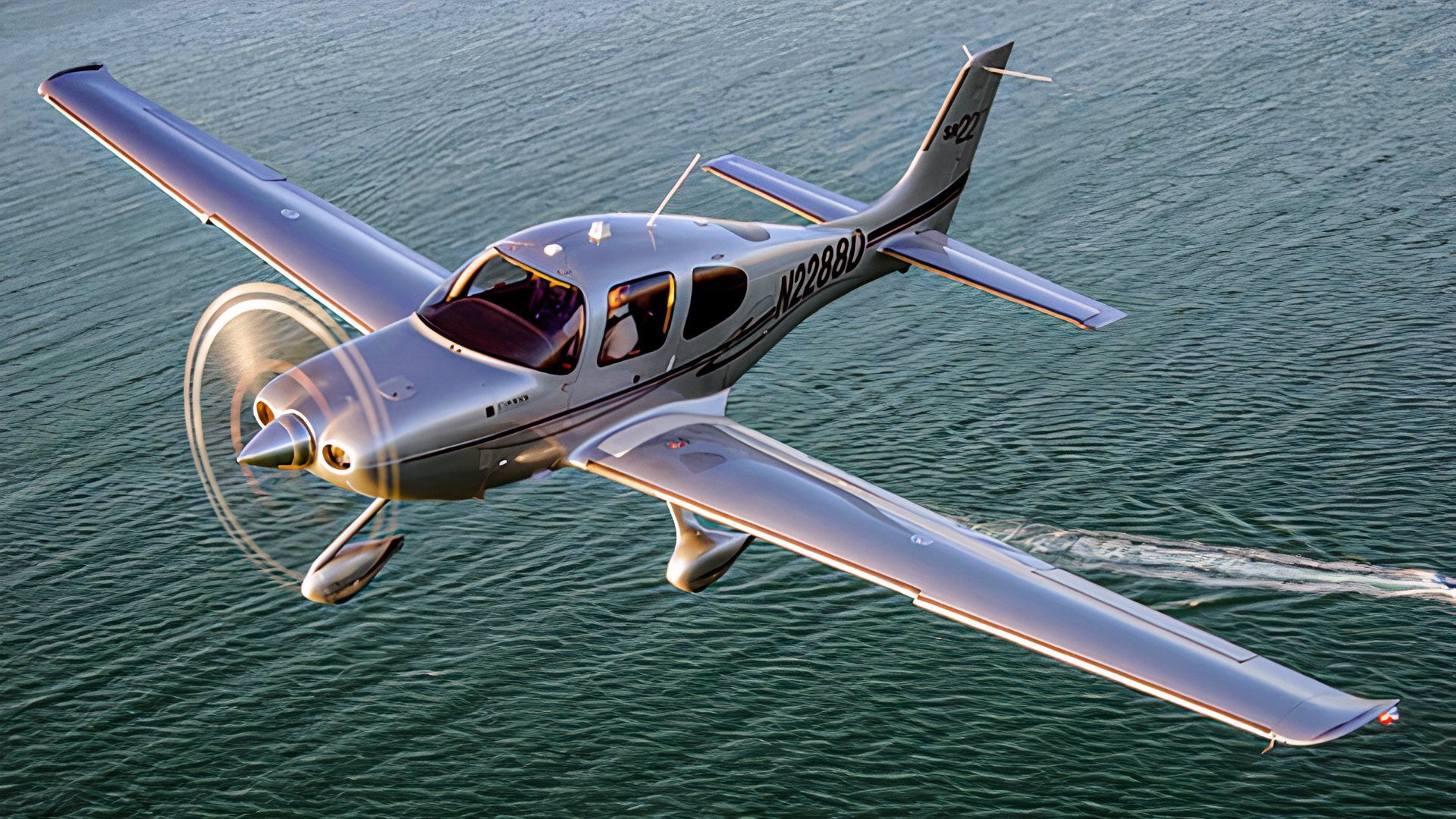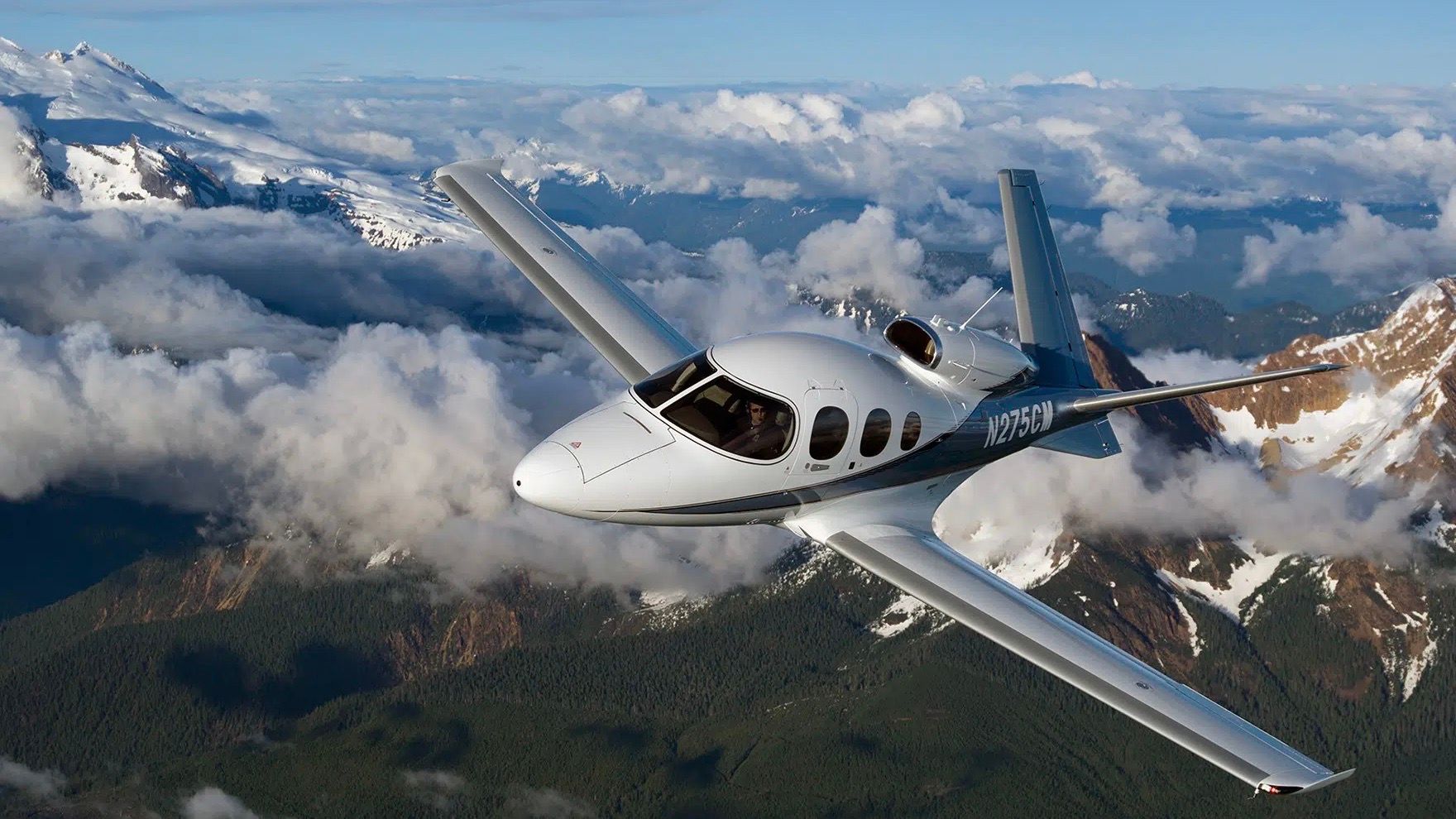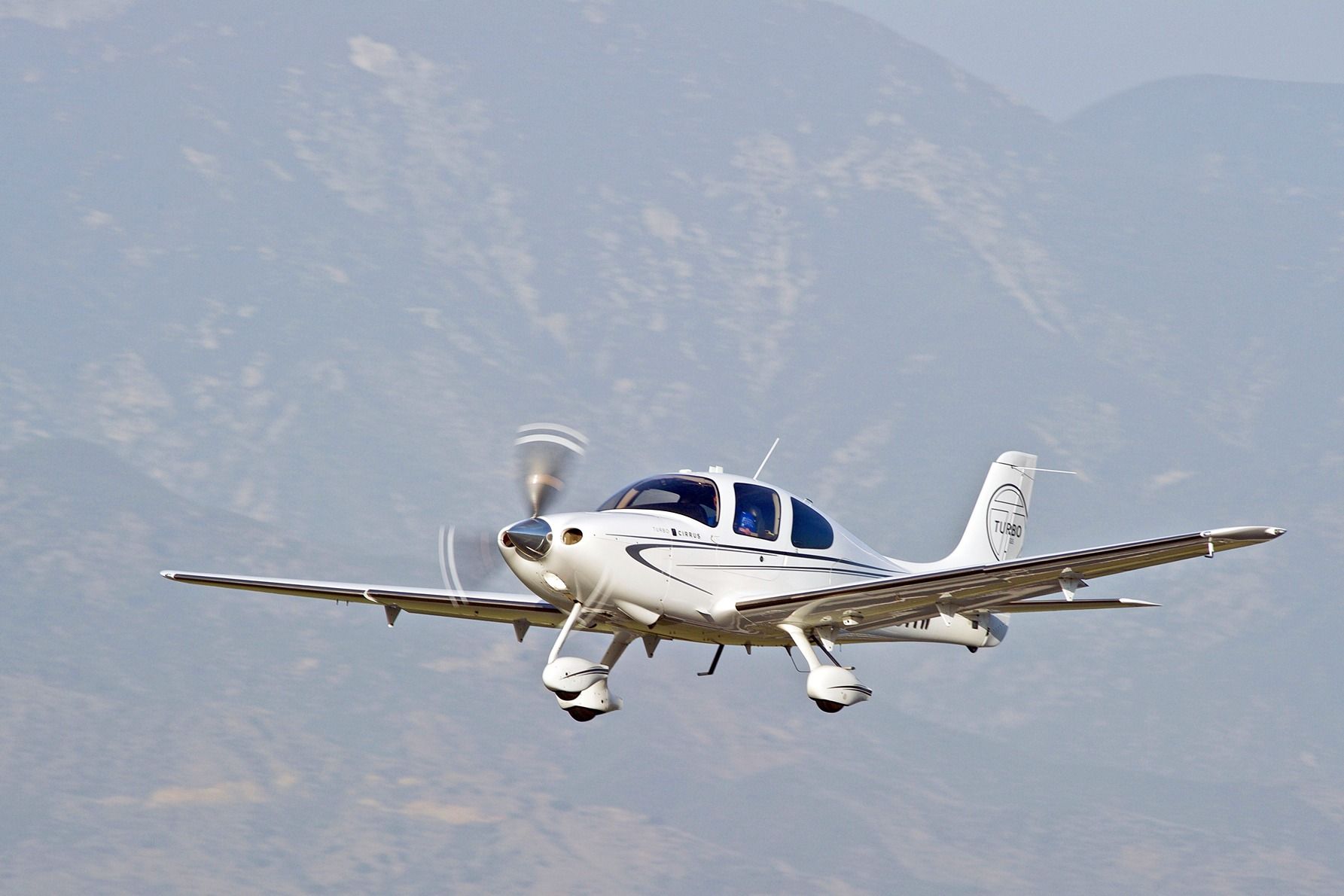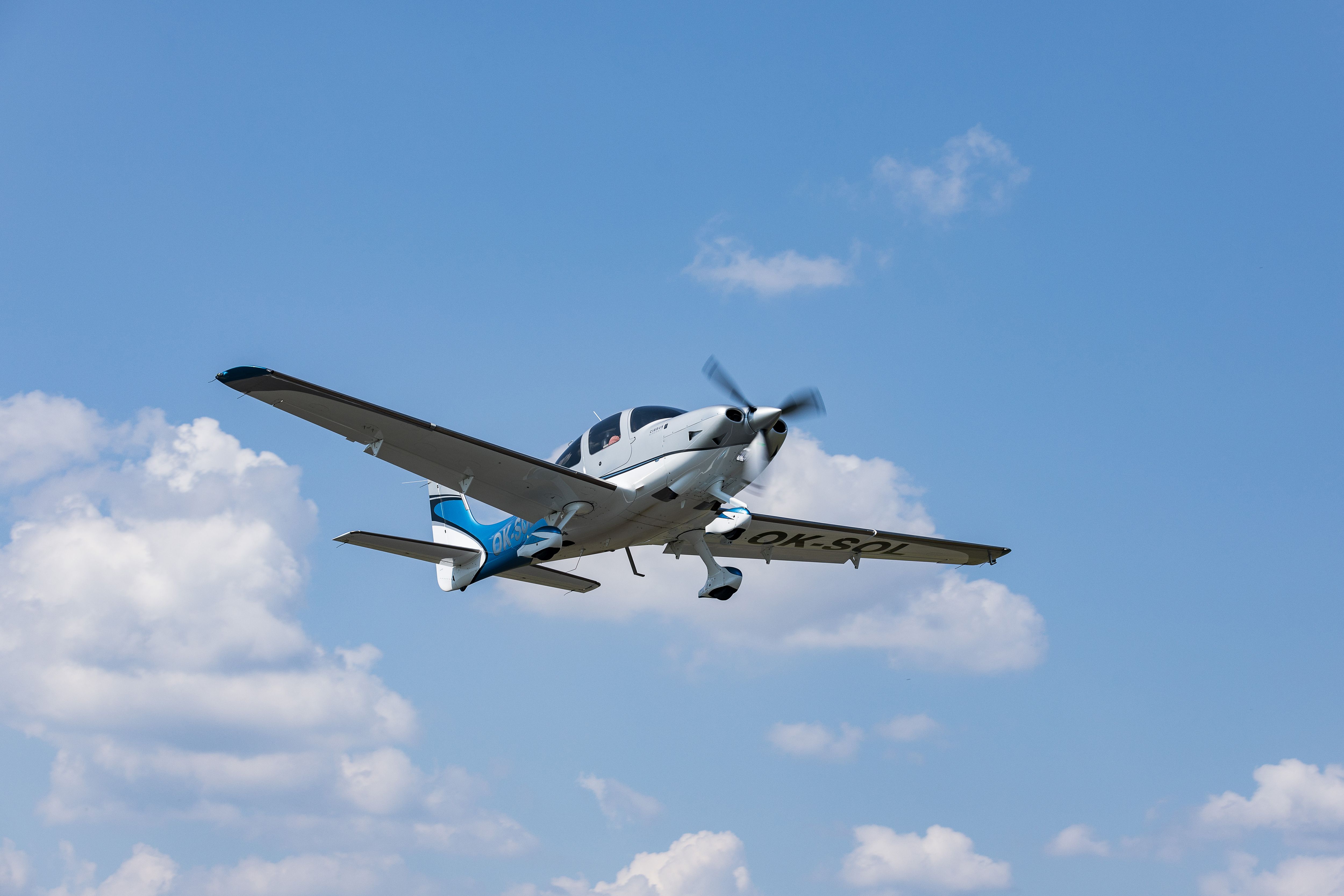Cirrus Aircraft is a well-known aircraft manufacturer headquartered in Duluth, Minnesota. The two founders, brothers Alan and Dale Klapmeier, built a homemade aircraft in their parents’ barn in 1984. Shortly after it was built, the two brothers began flight testing the aircraft, which was called the Cirrus VK-30 kit aircraft, and eventually introduced it at the local EAA AirVenture air show in Oshkosh, Wisconsin, in 1987. Kit deliveries for the newly designed aircraft began shortly after. The Klapmeier brothers continued designing aircraft after the VK-30s introduction.
Photo: Cirrus Aircraft
Cirrus was the first company to produce a single-engine business jet, the Vision SF50, which was introduced in 2016. However, since the company was founded in 1984 in Baraboo, Wisconsin, it has become well-known for its single-engine light aircraft. These light aircraft are powered by a single piston engine with a modified Garmin avionics system. Cirrus began producing its first piston aircraft, the SR20, in 1998. Since then, it has introduced its most popular light aircraft, the SR22. This aircraft began production in 2001 and has become its most successful model.
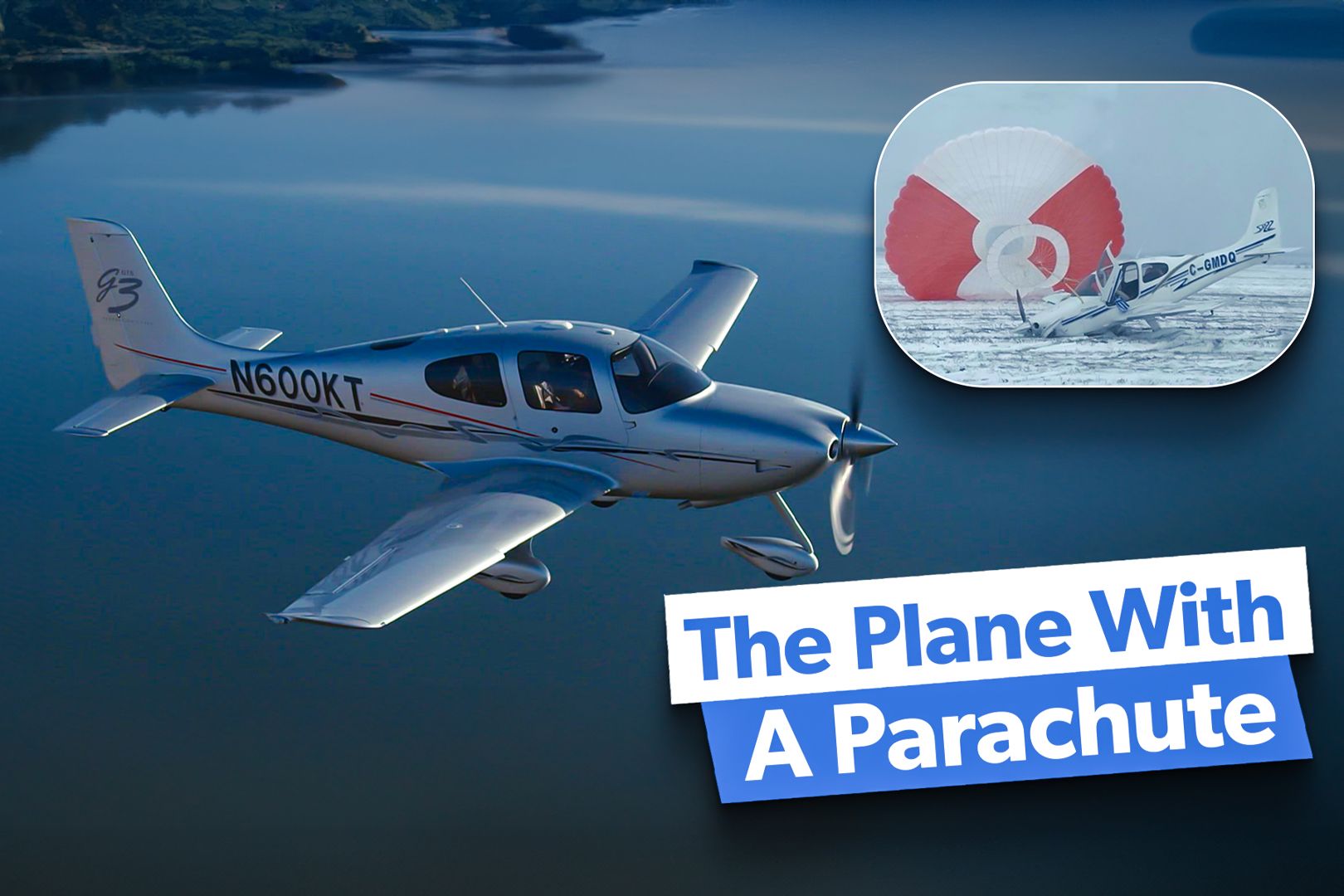
Related
The Plane With A Parachute: A Guide To The Cirrus SR22
This popular plane features a life-saving piece of equipment.
Let’s take a closer look at the history of the Cirrus SR22 and how it came to be. Let’s also take a look at why the Cirrus SR22 has become the company’s most popular aircraft.
Brief history of the aircraft
As previously mentioned, the Cirrus SR22 was first produced in 2001. However, the history of this aircraft can be traced back to the SR20, another Cirrus single-engine piston aircraft. The SR20 was the first Cirrus aircraft to break into the general aviation industry. When it was certified in the late 1990s, it was the first piston aircraft to be Federal Aviation Administration (FAA) certified in several years.
Photo: Cirrus
The SR20 saw immediate success. This was due to its updated avionics system, which would eventually be upgraded into a glass cockpit, and its use of composite materials to ensure light weight and high performance specifications. Cirrus also added several upgraded variants of the Cirrus SR20, which eventually found success in flight schools and were purchased by private owners across the world.
The success of the SR20 led Cirrus to begin development of an upgraded variant. Cirrus wanted to increase the aircraft’s range, top speed, and add other avionics upgrades. Cirrus began the development of the aircraft in the 1990s and eventually certified the SR22 in November 2000. The new aircraft featured a new, more powerful engine. The aircraft received positive feedback from the aviation industry.
Photo: Philip Pilosian | Shutterstock
The success of the SR22 led to several upgraded variants. In 2004, Cirrus released an SR22 G2, meaning generation 2, that had a standardized glass cockpit and a fuselage with several redesigns, per Global Air. Several years later, in 2007, Cirrus released the SR22 G3. This aircraft featured a lightweight carbon fiber wing spar and several performance improvements, including an increased range.
Another turbocharged SR22, which was designated as SR22T, was introduced in 2010. Cirrus released the SR22 G5, the fourth generation, in 2013, which featured a higher takeoff weight and other subtle aesthetic improvements. The SR22G^ was released in January 2017 and features an upgraded Garmin avionics suite. Finally, the SR22 G7 was unveiled earlier this year. The new G7 includes an upgrades interior and a new avionics system.
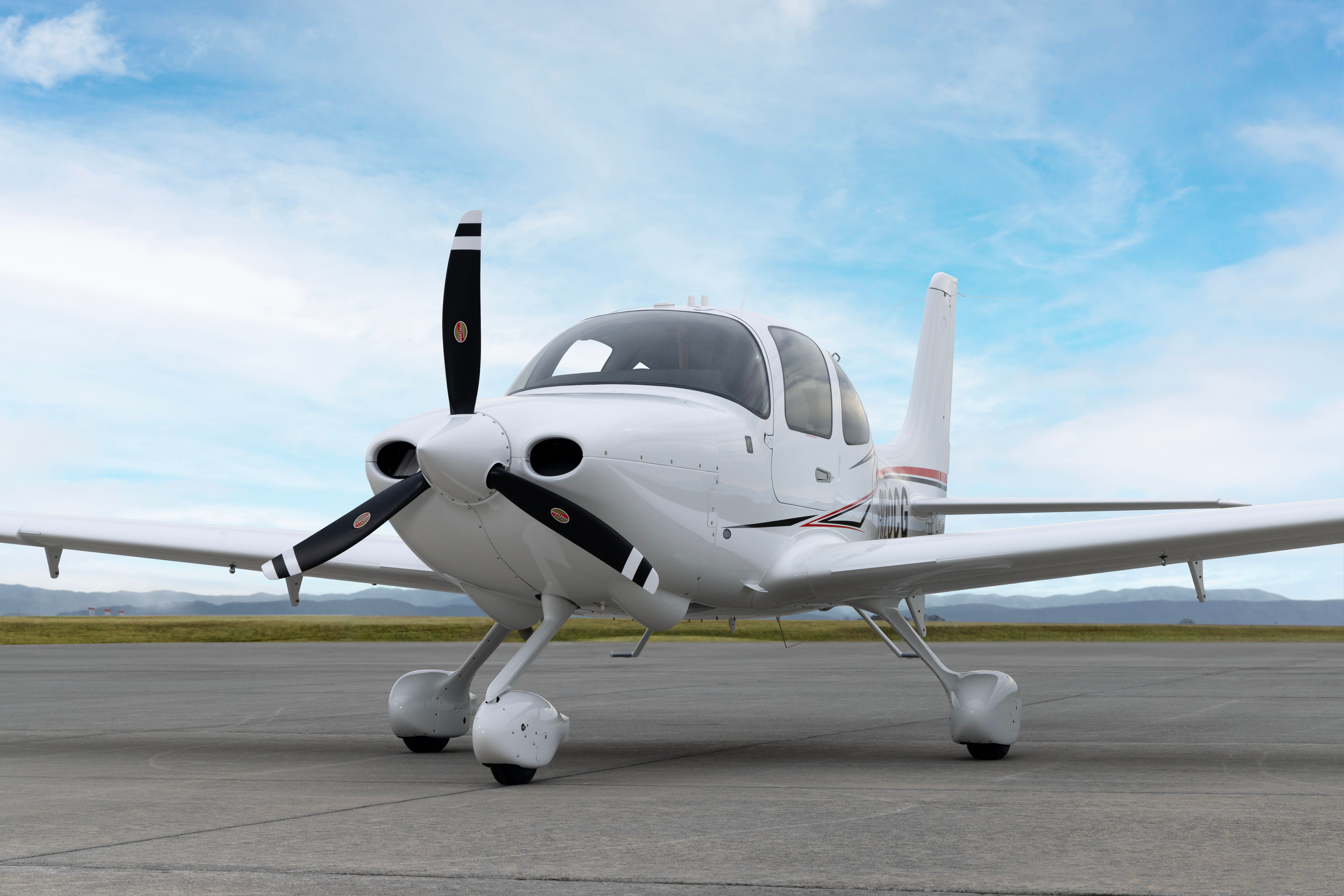
Related
Cirrus Unveils New, High-Tech G7 In Major Update To SR Series
The manufacturer is bringing new state-of-the-art upgrades to its high-performance propellor aircraft.
Notable design features
The SR22 has been the most successful general aviation aircraft in the 21st century. Nearly 8,000 total SR22 variants have been produced in the last 23 years. The airframe of the SR22 is mostly composite materials and features fixed landing gear. The SR22 can fit four passengers in addition to the pilot.
The powerful engine it utilizes is a Continental IO-550-N piston engine, which provides the aircraft with 310 total horsepower. The engine is made of six cylinders horizontally opposed and attaches to a three-blade prop. Turbocharged models of the aircraft use a more powerful engine that improved the aircraft’s cruise speed and also increased the flight ceiling to 25,000 feet.
Photo: Nadezda Murmakova | Shutterstock
Inside the cockpit, the aircraft utilizes a glass cockpit avionics suite. However, SR22s built before 2003 used traditional analog devices. In 2008, Cirrus began offering SR22s with the Cirrus Perspective avionics suite that was produced by Garmin. Other more recent upgrades to the avionics system may include:
- Garmin Electronic Stability and Protection (ESP)
- Enhanced vision system (EVS)
- Animated datalink weather
- Payload management
- Visual approach capabilities
- Dual Garmin touch controllers
- Stabilized approach advisory system
One of the most notable features of the SR22, and is also utilized in other Cirrus aircraft, is the Cirrus Airframe Parachute System (CAPS). After Alan Klapmeier experienced a midair collision in 1985, Alan wanted to ensure the safety of his aircraft and planned to put a parachute in every aircraft he designed. This safety system uses ballistics to shoot a parachute out the back of the aircraft in the event of an emergency.
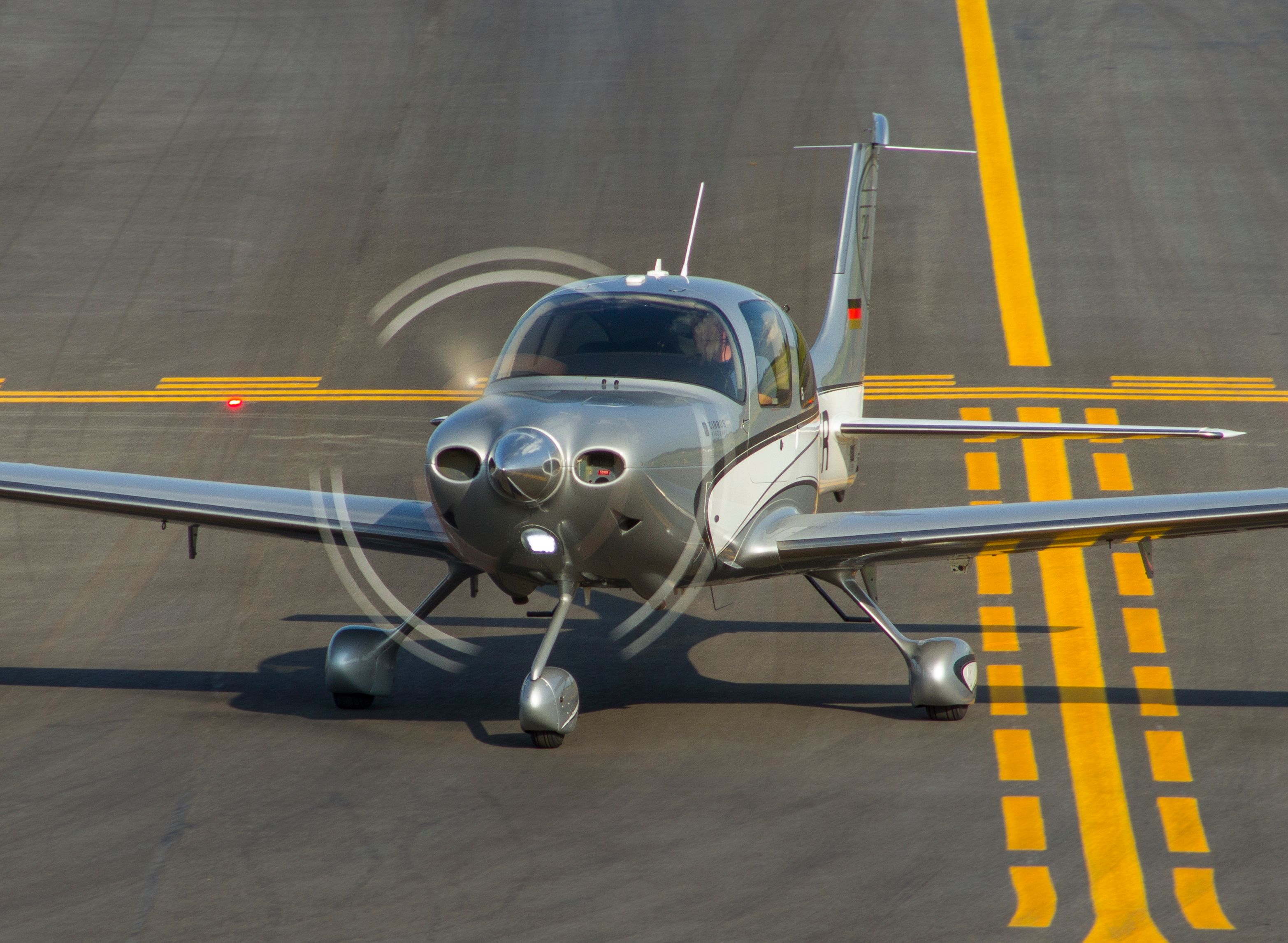 Other performance specifications
Other performance specifications
The newest SR22 variant is the G7. This aircraft had several improvements to the performance measures of previous variants. This aircraft has the following specifications:
|
Length |
26 feet |
|---|---|
|
Height |
Eight feet eleven inches |
|
Wingspan |
38 feet four inches |
|
Maximum takeoff weight (MTOW) |
3,400 pounds |
|
Range |
1,100 nautical miles (1,265 miles) |
|
Maximum speed |
186 knots (214 miles per hour) |
|
Cruise speed |
180 knots (207 miles per hour) |
|
Flight ceiling |
17,500 feet |
Overall, the SR22 can fit about 486 pounds of fuel. Its powerful engine also assists the aircraft’s impressive rate of climb, which is listed at about 1,400 feet per minute, per Global Air.

